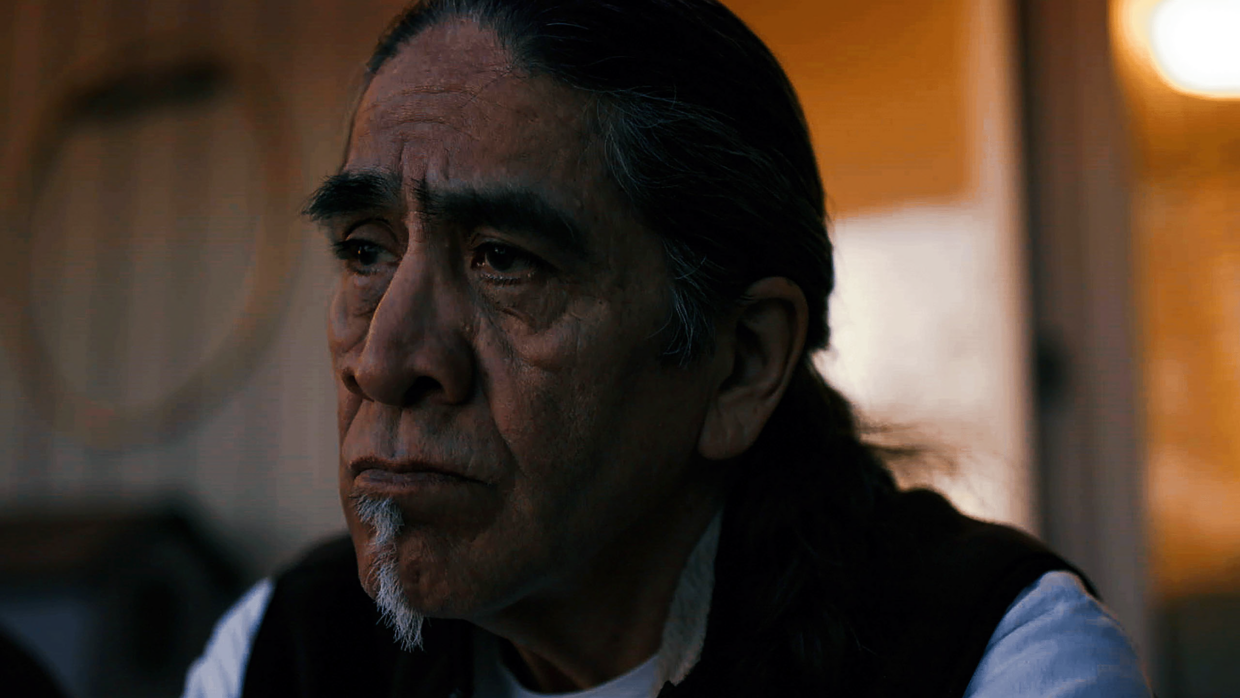 Back to selection
Back to selection
“The Biggest Challenge on a Verité Production is Time”: DP Christopher LaMarca on Sugarcane
 Still from Sugarcane. Courtesy of Sundance Institute. | Photo by Emily Kassie
Still from Sugarcane. Courtesy of Sundance Institute. | Photo by Emily Kassie Sugarcane, co-directed by journalists Julian Brave NoiseCat and Emily Kassie, is an investigation into the abuse and missing persons cases at an indigenous residential school and the associated tumult on the nearby Reserve. It is the debut film by NoiseCat, a former policy with personal ties to the community, and the second, after A Girl Named C, for Kassie.
Christopher LaMarca served as cinematographer, his second such credit, after Ry Russo-Young’s Nuclear Family. Below, he discusses some of the challenges peculiar to shooting verité films.
See all responses to our annual Sundance cinematographer interviews here.
Filmmaker: How and why did you wind up being the cinematographer of your film? What were the factors and attributes that led to your being hired for this job?
LaMarca: I’m fascinated by the process of immersive visual storytelling and believe in the power of story centered around the complexity and fragility of human existence. Sugarcane lent itself to exploring both of these aspects. Since I prefer to run my own sound and operate with a small crew—and this was a project where it was important to stay as close to the story as possible—it was a natural fit to join as the DP.
Filmmaker: What were your artistic goals on this film, and how did you realize them? How did you want your cinematography to enhance the film’s storytelling and treatment of its characters?
LaMarca: The main artistic goal was to create an entry point for the viewer that was both intimate and epic in scope, establishing a world where the landscapes on people’s faces and the world around them simultaneously echo the characters’ deepest truths and inner conflicts. This was a two-camera verité film. Director-cinematographer Emily Kassie and I found our language shooting on 35mm and 50mm prime lenses, often inches away from our characters’ faces.
Filmmaker: Were there any specific influences on your cinematography, whether they be other films, or visual art, of photography, or something else?
LaMarca: I come from a medium format photography background. The works of photographers like Miguel Rio Branco, Sally Mann, Luc Delahaye, and Paolo Pellgrin influence every day of my life.
Filmmaker: What were the biggest challenges posed by production to those goals?
LaMarca: The biggest challenge on a verité production is time. There’s no script, schedule, or solid end date. You’re only as good as your ability to embrace chaos and adapt to people’s lives happening in real time regardless of what the situation is.
Filmmaker: What camera did you shoot on? Why did you choose the camera that you did? What lenses did you use?
LaMarca: Our A-camera was a Canon C500 Mark 2 (B-camera was a Canon C300 Mark 2). The C500 Mark 2 was chosen for its full frame sensor, low light performance, modularity, and its ability to run four channels of audio. We chose not to have a dedicated sound person, so we ran audio in camera throughout production, which wouldn’t have been possible without this camera. The majority of the film was shot on 35mm f1.4 and 50mm f1.2 Canon L-series prime lenses.
Filmmaker: Describe your approach to lighting.
LaMarca: When shooting a verité film, one must embrace the available light of each scene whether it’s the sun or an overhead fluorescent light. We were often shooting way before sunrise and after sunset, capturing every ounce of blue and golden hour light each day. We used artificial light very sparingly and only to accentuate the available light when needed.
Filmmaker: What was the most difficult scene to realize and why? And how did you do it?
LaMarca: It’s hard to think of a verité film in terms of individual scenes in regard to production. The most difficult thing about shooting verité is maintaining the visual voice of the film while simultaneously running sound and having the stamina to stay present while the world around you is in constant flux. The locations, lighting, and character’s movements are always unpredictable.
Filmmaker: Finally, describe the finishing of the film. How much of your look was “baked in” versus realized in the DI?
LaMarca: Director/cinematographer Emily Kassie and I worked closely with our colorist, Marcy Robinson, to dial in the look we had established in camera during production.
TECH BOX
Film Title: Sugarcane
Camera: C500 m2, C300 m2
Lenses: Canon L series 35mm f1.2 prime – 50mm f1.4 prime/Canon L series 24-70 zoom
Lighting: Aputure 600x Pr/Aputure MC Pro
Color Grading: DaVinci
